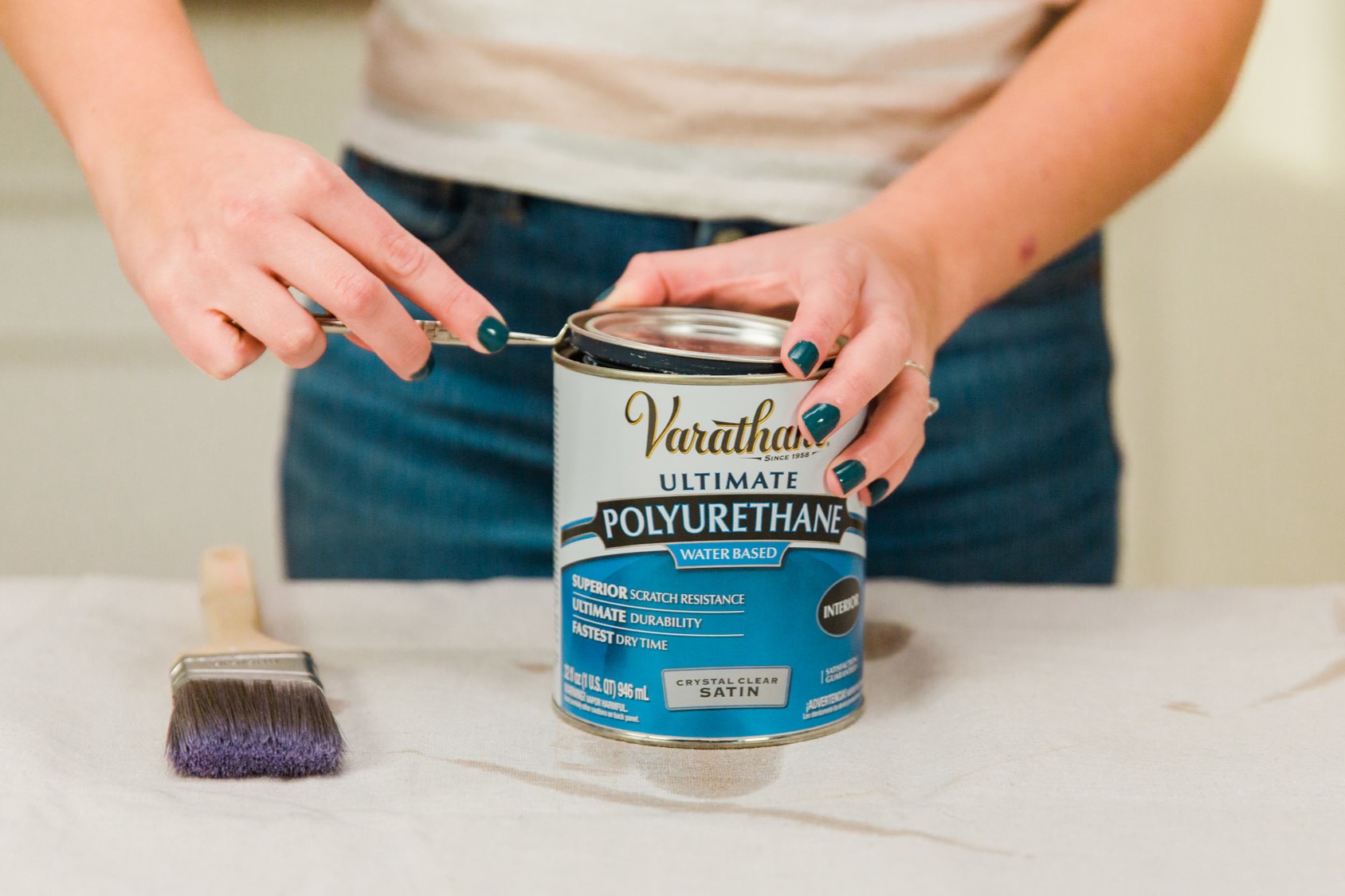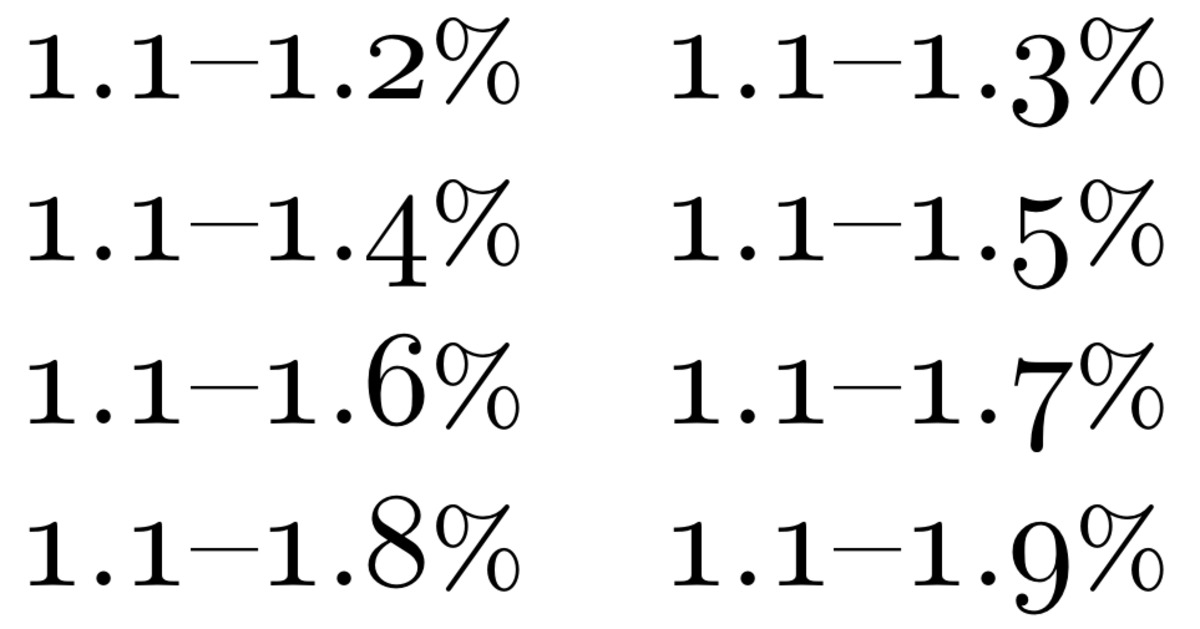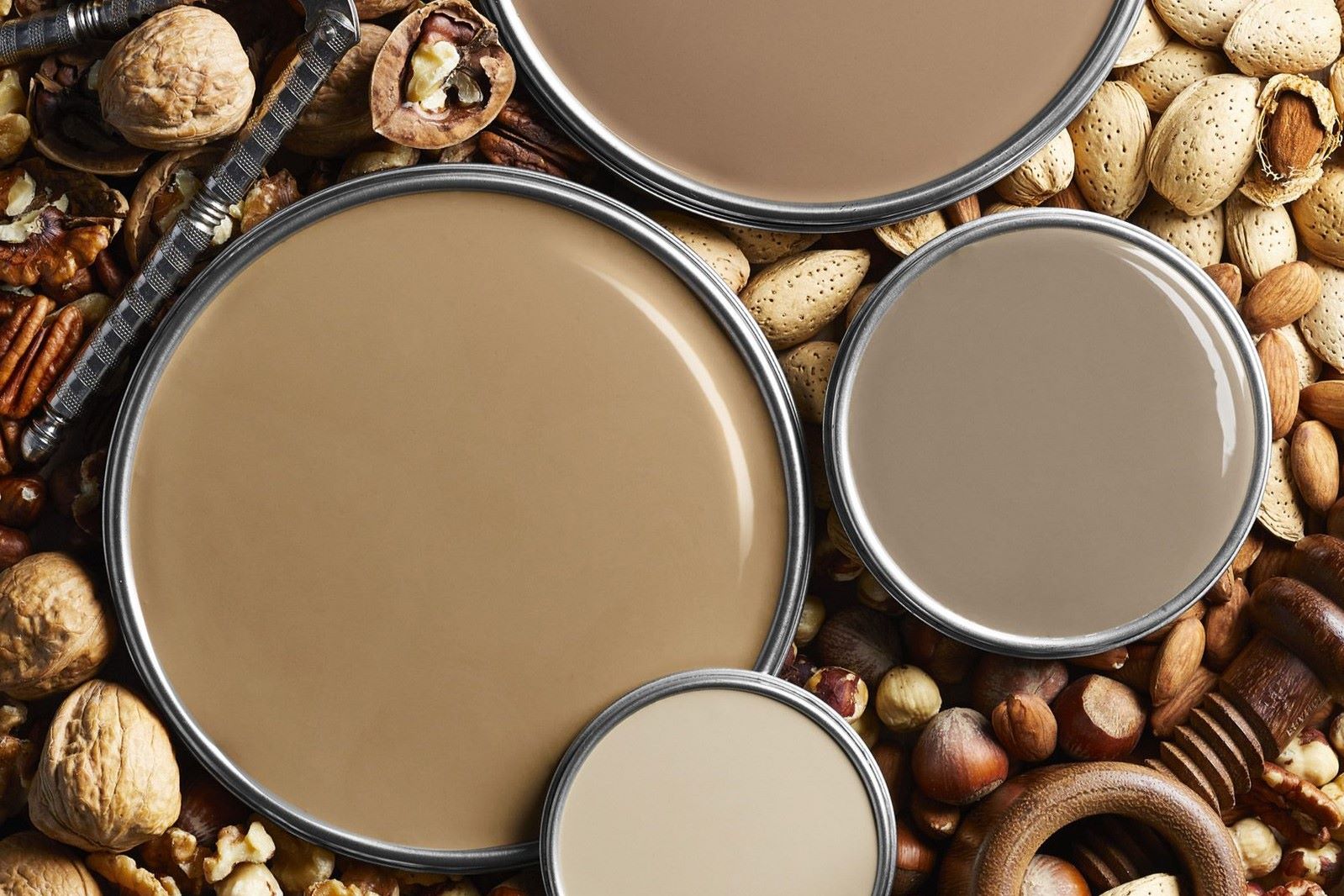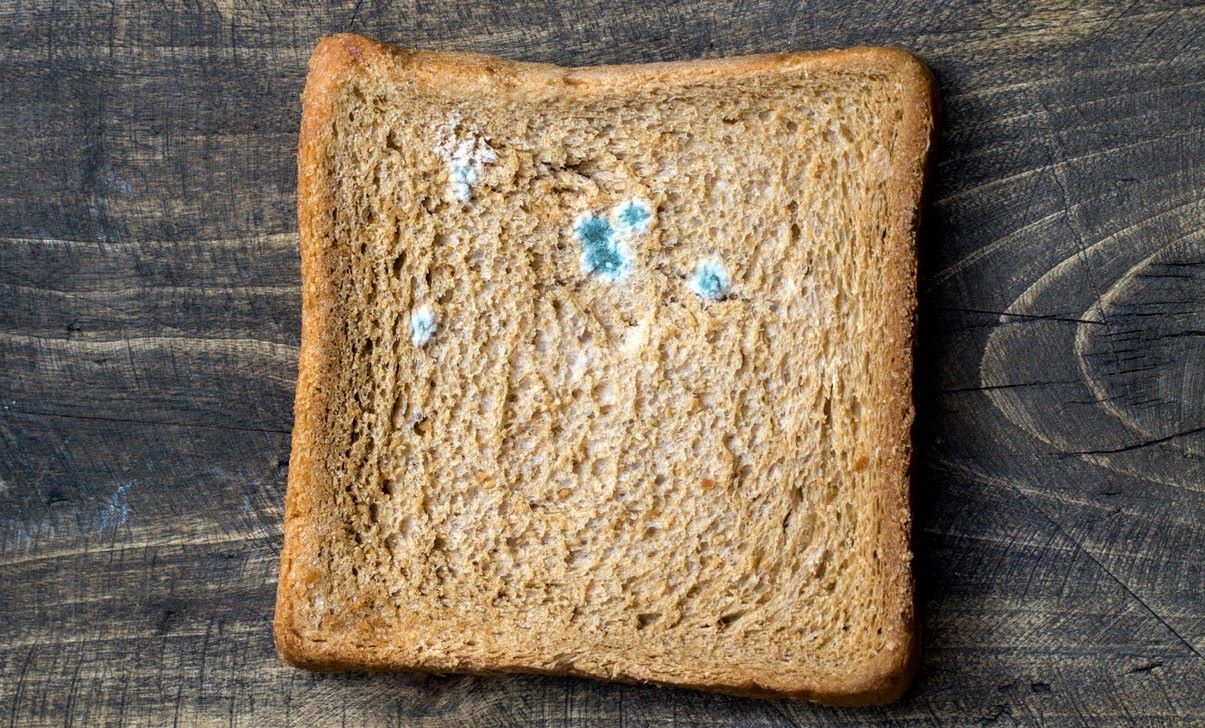Home>Home and Garden>Transform Your Latex Paint With A Polyurethane Finish


Home and Garden
Transform Your Latex Paint With A Polyurethane Finish
Published: January 13, 2024
Transform your latex paint into a durable masterpiece with a polyurethane finish. Elevate your home and garden projects with this expert technique.
(Many of the links in this article redirect to a specific reviewed product. Your purchase of these products through affiliate links helps to generate commission for Noodls.com, at no extra cost. Learn more)
Table of Contents
Introduction
Transforming your latex paint with a polyurethane finish can elevate the appearance and durability of your home decor. Whether you're rejuvenating a piece of furniture, updating kitchen cabinets, or adding a protective layer to a wall, polyurethane finish offers a versatile solution for enhancing the look and longevity of your latex paint projects.
By applying a polyurethane finish to your latex paint, you can achieve a professional-grade, glossy sheen that not only amplifies the visual appeal but also provides robust protection against wear and tear. This transformation not only enhances the aesthetic appeal of your surfaces but also ensures that they can withstand the rigors of daily use, making it an excellent choice for high-traffic areas in your home.
In this comprehensive guide, we will delve into the intricacies of applying a polyurethane finish to latex paint. From understanding the characteristics of polyurethane finish to the step-by-step process of application and maintenance, you will gain valuable insights that will empower you to elevate the appearance and durability of your latex paint projects.
So, whether you're a seasoned DIY enthusiast looking to revitalize your living space or a newcomer eager to explore the world of home improvement, this guide is your gateway to unlocking the transformative potential of polyurethane finish for your latex paint endeavors. Let's embark on this journey together and discover the art of enhancing and preserving the beauty of your home with polyurethane-finished latex paint.
Understanding Polyurethane Finish
Polyurethane finish is a versatile and durable coating that serves as a protective layer for various surfaces, including latex paint. It is available in different formulations, such as water-based and oil-based, each offering unique characteristics and application methods.
Types of Polyurethane Finish
-
Water-Based Polyurethane: This type of polyurethane finish is known for its quick drying time and low odor, making it a popular choice for indoor projects. It provides a clear, non-yellowing finish, making it ideal for preserving the natural color of the underlying latex paint.
-
Oil-Based Polyurethane: Oil-based polyurethane offers exceptional durability and a rich, amber hue that can add warmth to the surface it covers. While it takes longer to dry and has a stronger odor compared to water-based polyurethane, it provides a robust protective layer that is well-suited for high-traffic areas and surfaces exposed to moisture.
Benefits of Polyurethane Finish
- Durability: Polyurethane finish forms a hard, protective coat that shields the underlying latex paint from scratches, stains, and moisture, extending the lifespan of the painted surface.
- Enhanced Appearance: It imparts a glossy sheen to the latex paint, elevating its visual appeal and providing a professional-looking finish.
- Easy Maintenance: Once applied, polyurethane finish is easy to clean and maintain, allowing for long-lasting beauty and protection.
Application Considerations
- Surface Preparation: Properly preparing the latex paint surface before applying polyurethane finish is crucial for achieving a smooth and flawless result. This may involve sanding the surface, removing any dust or debris, and ensuring that the paint is fully cured.
- Application Techniques: Whether using a brush, roller, or sprayer, the application method can impact the final appearance of the polyurethane finish. Careful attention to technique and even application is essential for a professional-looking result.
- Drying Time: Understanding the drying time of the chosen polyurethane finish is important for planning and executing the application process effectively.
By grasping the characteristics and application nuances of polyurethane finish, you can harness its transformative potential to elevate the appearance and durability of your latex paint projects. Whether you seek to impart a lustrous sheen to furniture, cabinets, or walls, the versatility and protective qualities of polyurethane finish make it a valuable asset in the realm of home improvement and decor enhancement.
Preparing Your Latex Paint for Polyurethane Finish
Before applying polyurethane finish to your latex paint, it's essential to ensure that the painted surface is properly prepared. This preparatory phase plays a pivotal role in achieving a seamless and durable polyurethane finish that enhances the visual appeal and longevity of the painted surface. Here's a detailed exploration of the steps involved in preparing your latex paint for the application of polyurethane finish:
Surface Inspection and Cleaning
Begin by carefully examining the latex paint surface to identify any imperfections, such as bumps, drips, or uneven areas. If present, gently sand the surface using fine-grit sandpaper to create a smooth and uniform texture. Once the surface is smooth, thoroughly clean it to remove any dust, dirt, or residues that may hinder the adhesion of the polyurethane finish. A damp cloth or sponge, along with a mild detergent, can be used to effectively clean the surface, followed by a complete drying period to ensure a pristine foundation for the polyurethane application.
Ensuring Full Curing of Latex Paint
It's crucial to allow the latex paint to fully cure before applying the polyurethane finish. Depending on the type of latex paint used and environmental conditions, curing times may vary. As a general guideline, latex paint typically requires several days to a week to fully cure. It's advisable to refer to the manufacturer's recommendations for specific curing durations, ensuring that the paint has hardened adequately to support the application of polyurethane finish.
Smoothing Imperfections and Surface Preparation
In cases where the latex paint surface exhibits imperfections such as brush marks or uneven texture, consider using a high-quality sanding block or sandpaper to gently smooth out these irregularities. This step not only enhances the visual appeal of the final finish but also promotes better adhesion of the polyurethane coating.
Read more: My Latex Journey: A Fashion Revelation
Removing Dust and Residues
After sanding and smoothing the latex paint surface, it's essential to eliminate any dust particles or residues that may have accumulated. A tack cloth or microfiber cloth can be used to carefully wipe the surface, ensuring that it is completely free from any debris that could compromise the quality of the polyurethane finish.
By diligently following these preparatory steps, you can create an optimal foundation for the application of polyurethane finish to your latex paint. This meticulous approach sets the stage for a successful and enduring transformation, allowing the polyurethane finish to seamlessly enhance the aesthetic appeal and protective qualities of your latex paint projects.
Applying Polyurethane Finish to Latex Paint
Once the preparatory steps have been meticulously completed, it's time to embark on the transformative process of applying polyurethane finish to your latex paint. This pivotal phase requires attention to detail and a methodical approach to ensure a flawless and enduring result. Here's a comprehensive exploration of the step-by-step process involved in applying polyurethane finish to latex paint:
Step 1: Choosing the Right Polyurethane Finish
Selecting the appropriate type of polyurethane finish is the first crucial decision in the application process. Consider factors such as the desired sheen, the location of the painted surface, and the level of durability required. Whether opting for water-based or oil-based polyurethane, ensure that it aligns with the specific needs and characteristics of your latex paint project.
Step 2: Application Tools and Techniques
The choice of application tools, such as brushes, rollers, or sprayers, can significantly influence the final outcome of the polyurethane finish. For smaller, intricate surfaces, a high-quality brush may offer precise control, while a roller or sprayer could be more efficient for larger areas. Carefully consider the application technique that best suits the nature of the surface and the desired finish.
Step 3: Applying the First Coat
Begin the application process by applying the first coat of polyurethane finish to the prepared latex paint surface. Ensure that the application is even and free from drips or streaks. Work methodically, following the natural grain of the surface when applicable, to achieve a uniform and professional-looking coat. Allow the first coat to dry according to the manufacturer's recommendations before proceeding to the next step.
Step 4: Sanding Between Coats
After the first coat has dried, lightly sand the surface using fine-grit sandpaper to promote adhesion and smooth out any imperfections. This step is crucial for creating a seamless and blemish-free finish. Carefully remove any sanding residues and ensure that the surface is clean and ready for the subsequent coat of polyurethane finish.
Step 5: Applying Subsequent Coats
Repeat the application process for additional coats of polyurethane finish, ensuring that each coat is applied evenly and allowed to dry thoroughly before proceeding to the next. Depending on the desired level of sheen and durability, multiple coats may be necessary to achieve the desired effect. Exercise patience and precision throughout this iterative process to attain a stunning and resilient polyurethane finish.
Step 6: Final Inspection and Curing
Once the final coat has been applied and has dried according to the manufacturer's guidelines, carefully inspect the surface for any irregularities or imperfections. Allow the polyurethane finish to cure fully, providing ample time for it to harden and develop its protective properties. This curing period is essential for ensuring the longevity and resilience of the finish.
By diligently following these step-by-step guidelines, you can effectively apply polyurethane finish to your latex paint, elevating its visual allure and fortifying its endurance. This transformative process imbues your painted surfaces with a professional-grade finish, creating a lasting impact on the aesthetic and functional aspects of your home decor and furnishings.
Read more: How To Make Gold Paint
Caring for Polyurethane-Finished Latex Paint
Caring for polyurethane-finished latex paint is essential to preserve its luster and protective qualities over time. By adopting proper maintenance practices, you can ensure that your polyurethane-finished surfaces retain their visual appeal and durability for years to come. Here's a comprehensive guide on how to care for and maintain polyurethane-finished latex paint:
Regular Cleaning
Regularly dusting and cleaning polyurethane-finished surfaces is crucial for preventing the accumulation of dirt, grime, and other particles that can diminish their appearance. Use a soft, microfiber cloth or a gentle duster to remove surface dust and debris. For more stubborn stains or residues, lightly dampen the cloth with water or a mild cleaning solution suitable for polyurethane finishes. Avoid using harsh chemicals or abrasive cleaners that can compromise the integrity of the finish.
Avoiding Abrasive Materials
When cleaning or performing maintenance on polyurethane-finished surfaces, it's important to avoid abrasive materials that can scratch or damage the finish. Opt for non-abrasive cleaning tools and gentle cleaning solutions to maintain the pristine condition of the finish. Additionally, be mindful of placing abrasive objects directly onto polyurethane-finished surfaces to prevent scratches or blemishes.
Protection from Heat and Moisture
Protecting polyurethane-finished surfaces from prolonged exposure to extreme heat or moisture is essential for preserving their quality. Use coasters, trivets, or placemats to shield surfaces from hot cookware, cups, or other items that can generate heat. In areas prone to moisture, such as kitchens and bathrooms, ensure proper ventilation to mitigate the effects of humidity on the polyurethane finish.
Inspecting for Wear and Damage
Periodically inspect polyurethane-finished surfaces for signs of wear, scratches, or damage. Address any issues promptly to prevent them from escalating and compromising the integrity of the finish. Minor touch-ups or refinishing may be necessary over time to maintain the pristine appearance and protective properties of the polyurethane finish.
Preventing Impact and Pressure
Exercise caution to prevent heavy impact or pressure on polyurethane-finished surfaces, especially in high-traffic areas. Use protective pads or cushions under furniture legs and avoid dragging heavy objects across the surfaces to minimize the risk of dents, scratches, or indentations.
By adhering to these care and maintenance practices, you can safeguard the beauty and resilience of polyurethane-finished latex paint, ensuring that your surfaces retain their captivating sheen and protective capabilities for the long term. Incorporating these strategies into your regular maintenance routine will contribute to the lasting allure and durability of your polyurethane-finished latex paint projects.
Conclusion
In conclusion, the application of a polyurethane finish to latex paint represents a transformative and impactful endeavor in the realm of home improvement and decor enhancement. By understanding the characteristics and application nuances of polyurethane finish, individuals can harness its versatility and protective qualities to elevate the visual allure and durability of various painted surfaces.
The process begins with meticulous surface preparation, encompassing inspection, cleaning, and ensuring the full curing of the latex paint. This preparatory phase sets the stage for a seamless and enduring polyurethane finish, laying the groundwork for a professional-grade transformation.
The application of polyurethane finish to latex paint demands attention to detail and a methodical approach. From selecting the appropriate type of polyurethane finish to applying multiple coats with precision and care, each step contributes to the creation of a lustrous and resilient finish that enhances the aesthetic appeal and longevity of the painted surfaces.
Furthermore, the care and maintenance of polyurethane-finished latex paint are paramount for preserving its visual allure and protective properties over time. By adopting regular cleaning practices, avoiding abrasive materials, protecting surfaces from heat and moisture, and addressing wear and damage, individuals can ensure that their polyurethane-finished surfaces retain their pristine condition and resilience.
In essence, the journey of transforming latex paint with a polyurethane finish is a testament to the artistry and practicality of home decor enhancement. It empowers individuals to breathe new life into furniture, cabinets, walls, and various painted surfaces, infusing them with a professional-grade finish that withstands the tests of time and use.
As DIY enthusiasts and homeowners embark on this transformative journey, they are poised to unlock the transformative potential of polyurethane finish, elevating the beauty and longevity of their living spaces. Whether revitalizing cherished furniture pieces or fortifying high-traffic surfaces, the art of applying polyurethane finish to latex paint stands as a testament to the enduring fusion of aesthetics and functionality in the realm of home and garden endeavors.










